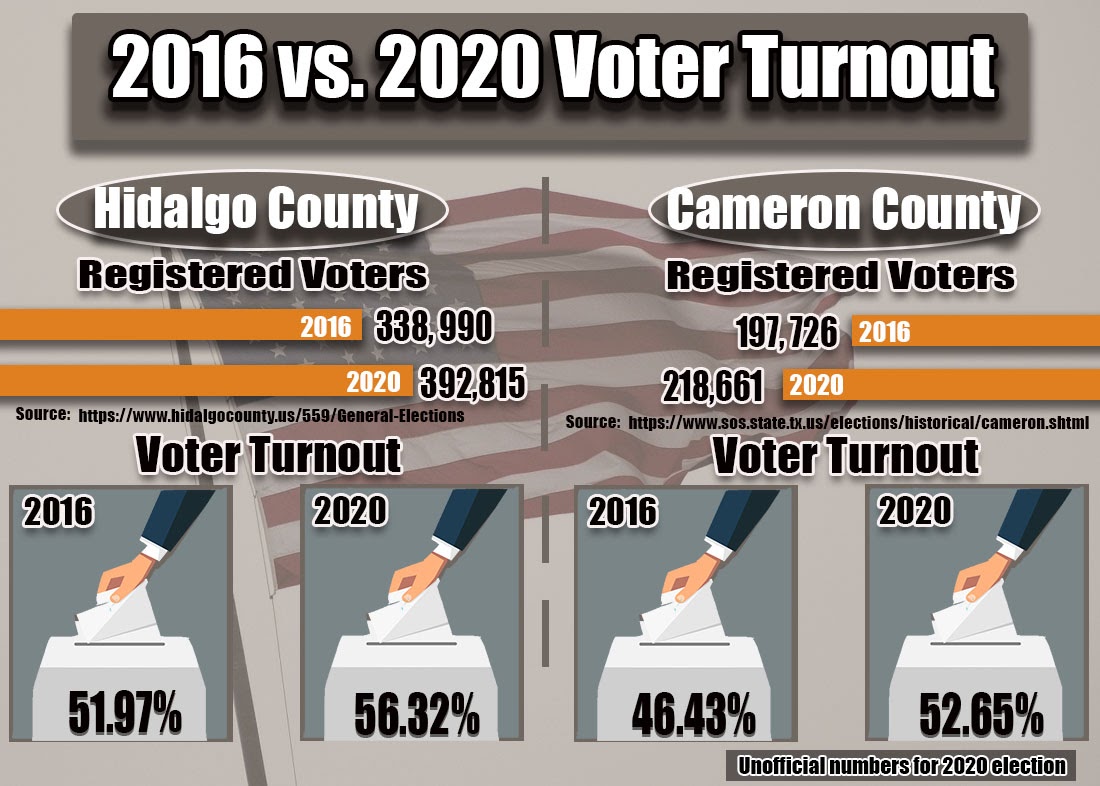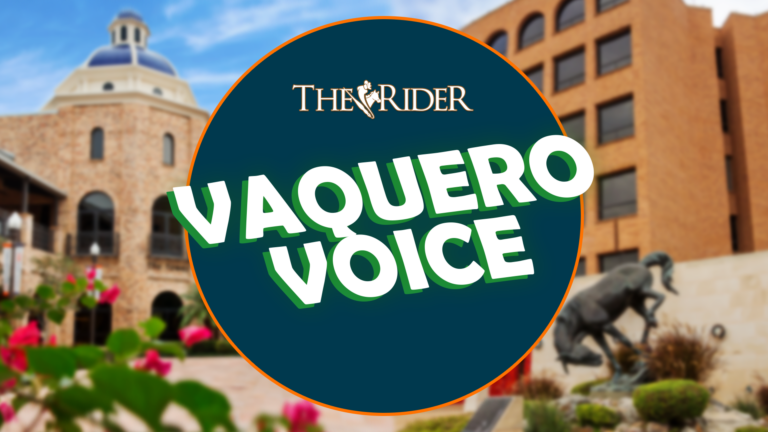
For Cameron County, the voter turnout for 2020 was 52.65%.
Fernanda Figueroa | THE RIDER
In the 2020 presidential election, ballots cast in Hidalgo and Cameron counties surpassed those in the 2016 election by 4.35% and 6.21%, respectively, according to the counties’ official election website.
During the 2016 presidential election, 17,160, or 51.97% of 338,990 registered voters in Hidalgo County cast a ballot, according to its official election website.
For 2020, 221,254, or 56.32% of 392,815 registered voters in the county cast a ballot.
During the 2016 presidential election, Cameron County had 197,726 registered voters. Of these 93,716 voted for a total turnout of 46.43%, per its official election website.
For this year’s presidential election, there were 218,661 registered voters in Cameron County, of who 115,093, or 52.65%, cast a ballot per the official election website.
UTRGV political science professors say the increase in voter turnout especially among Hispanics, has much to do with the effect the pandemic has had on them.
“In our region, compared to the national level, we are not really privileged in terms of medical systems and other social nets,” political science Assistant Professor Mi-son Kim said. “That’s why the impact can be felt more seriously in our region. So, emotionally, psychologically that affects a lot of people. So, I think that definitely helped a lot of voters in the [Rio Grande Valley] to realize that it is so important they express their political opinions.”
Other factors for the increase in voter turnout are the diminishing rights of minorities, voting restrictions and the media’s focus on the election, according to political science Associate Professor Natasha Altema- McNeely.
“For the perspective of sexual orientation, there’s a realization that with the current administration there has been some losses,” said Altema-McNeely. “Of course, we are in the middle of a pandemic and that’s also driving people to the polls.”
Through her research, Altema-McNeely has learned that for Hispanics, the main issues that drove them to the polls are those that are closely related to the pandemic.
“For Latinos, some policies… that were driving them to the polls were primarily the response to the pandemic,” Altema-McNeely said. “Concerns about healthcare costs, economic and job-related concerns, I think those issues remain at the top of many Hispanics’ lists of issues they are concerned about and turning those concerns into incentives to go to the polls.”






